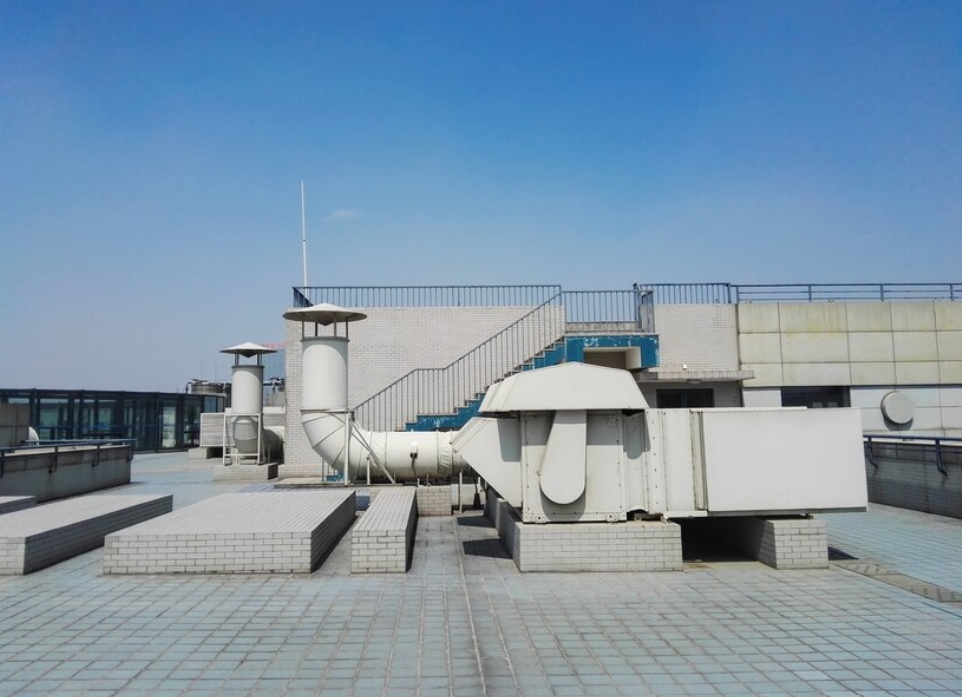
Mechanical vs Architectural Louvers: Key Differences for Choosing the Right Option
Louvers are essential components in building ventilation systems, helping control airflow while keeping out unwanted elements like water, dust, and debris. These unsung heroes of building design play a critical role. Piercing a building’s envelope opens up the opportunity for damage if the right louver is not used. Louvers have a big impact on both the functionality and aesthetics of a building.
Understanding the application and requirements for a building is essential to choosing the right type of louver.
What Are Louvers?
Louvers are slatted devices installed in building openings to control airflow while providing protection from external elements. While simple at first glance, these components have a tough job. Buildings require fresh air to keep the building ventilated and the air fresh for occupants. Letting in unwanted elements like rain or bugs can not only cause damage to the building but can cause problems throughout the ductwork and HVAC system.
Louvers are available in many different designs and materials ranging from aluminum and steel to plastic and fiberglass. Louvers can be made in many different sizes to meet diverse performance and architectural needs. Louvers have been used since the Middle Ages to allow airflow into buildings while keeping out water and debris. Today, they are used in both functional and decorative applications.
Mechanical Louvers
Mechanical louvers focus on performance and efficiency, ensuring high airflow with minimal pressure drop. They protect HVAC systems from rain, dust, and debris, and many feature adjustable blades for manual or automatic airflow control. Certified by AMCA for industry standards, they provide reliable performance. While they can be aesthetically pleasing, mechanical louvers prioritize function over form, making them ideal for utility or back-end areas where performance matters most.
Architectural Louvers
Architectural louvers balance aesthetics with functionality, offering visually appealing designs that also support ventilation and protection. Integrated into building facades, they enhance architectural style and can be customized with various materials, finishes, and blade styles. Specified in Division 8 for facade integration, they differ from the functional focus of Division 23 mechanical louvers. Commonly used in high-visibility areas like offices and hotels, architectural louvers prioritize design while maintaining airflow.
Key Differences Between Mechanical and Architectural Louvers
Mechanical louvers prioritize functionality and performance, making them ideal for ventilation and protection in utility areas or industrial facilities. In contrast, architectural louvers balance aesthetics and airflow, often integrated into building facades to enhance visual appeal. While mechanical louvers are typically utilitarian and sometimes adjustable for airflow control, architectural louvers are often fixed to maintain consistent design. Combination louvers can provide the best of both worlds, blending visual appeal with functionality.
Primary Purpose:
- Mechanical: Focus on ventilation and protection.
- Architectural: Emphasis on aesthetics and airflow balance.
Visual Impact:
- Mechanical: Utilitarian, less visually prominent.
- Architectural: Designed to complement or enhance building facades.
Applications:
- Mechanical: HVAC systems, industrial facilities, utility rooms.
- Architectural: High-visibility areas like building facades, offices, hotels.
Adjustability:
- Mechanical: Often adjustable for airflow control.
- Architectural: Typically fixed for consistent design, with combination options available.
Choosing Between Mechanical and Architectural Louvers
Sometimes the choice between a mechanical and architectural louver is easy and other times it is more nuanced. Some of the key parameters to consider when making the decision include:
- Performance needs
- Visual impact
- Budget
- Location
Consider the application first. If high-efficiency ventilation and precise airflow control are needed, mechanical louvers are probably the right decision. Mechanical louvers are better suited for these requirements.
Visual impact is another key parameter to consider. Architectural louvers are ideal when building aesthetics are important and the louver needs to blend seamlessly with the design. Mechanical louvers can give the building a much more functional, industrial look.
Budget is always a consideration in this decision. Mechanical louvers are generally more cost-effective, while architectural louvers may have higher costs due to customization and visual design. When all else is equal, mechanical louvers are usually the default choice.
The prominence of the installed location is another key factor to consider. Mechanical louvers are suitable for utility areas, while architectural louvers are better for visible locations. Louvers in a building are often mixed and matched to provide the right blend of requirements, budget constraints, and visual impact.
Trust Metal Form for All Your Louver Needs
The choice between mechanical and architectural louvers should be based on specific project needs whether the focus is on performance, aesthetics, or a combination of both. Understanding the roles of mechanical and architectural louvers can help ensure effective airflow, building protection, and a visually appealing outcome. Exploring options with a trusted partner like Metal Form can help make sure your building hits all of the project requirements while staying within budget.
To learn more about the differences between mechanical and architectural louvers, reach out to the louver experts at Metal Form today.
